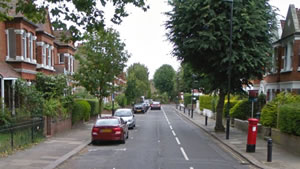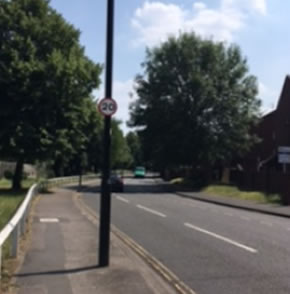Community Road Watch volunteers finds cars are still ignoring speed limit
|
Ealing Council appears to be taking the issue of motorists exceeding the 20 mph limits on residential roads more seriously, following the results of surveys conducted by Community Road Watch volunteers who have been monitoring the number or drivers exceeding the speed limit.
The Council has installed traffic counting and speed monitoring strips on Acton Lane, Southfield Road, The Avenue, and South Parade.
The local Community Road Watch volunteers are hoping that this will lead to better signage being put up, and more effective traffic calming measures being put in place.

A Community Road Watch session held on Friday 8 December produced the following results:
Southfield Road junction with Acton Lane, out of 151 vehicles in a sixty minute survey, a total of 28 vehicles were recorded as travelling at over 25 mph, (the maximum was 34mph and the average speed was 27 mph).
At a second location, Southfield Road junction with Carlton Road, 77 vehicles were recorded and of those, 32 were travelling at over 25 mph, the average speed was 28 mph and the maximum speed was 41 mph.
A previous session in Southfield found that many drivers- almost one per minute- were not recognising the 20 mph speed limit.
Community Roadwatch (CRW) is a road safety scheme run in partnership by Transport for London, the Metropolitan Police Service, and the City of London Police, in which local residents work with the police Safer Transport Team in their borough, and use speed detection equipment to identify speeding vehicles.
The scheme is not an enforcement exercise, rather it is intended to alert and educate drivers to the existence of speed limits, and to improve road safety by encouraging motorists to reduce their speed in residential areas. The community volunteers record the details of vehicles travelling at 25mph or more, but no attempt is made to stop the vehicles, or signal drivers to slow down.
The registered keeper of each speeding vehicle will receive a warning letter from the police. If caught again, a second letter will sent to the registered keeper warning that if caught a third time the vehicle will be added to police Automatic Number Plate Recognition (APNR) system.
Any vehicle caught speeding on 3 or more occasions will be considered to targeted enforcement (fines and points), but this will not be part of the CRW activity.

Acton Lane
Drivers appear to be ignoring the speed limit across the country. Recent figures released by the Department for Transport showed that 81 per cent of cars recorded at nine sites across the country in 2016 broke the limit, with a handful - 15 per cent - travelling at more than 30mph.
Motoring groups have said the low limit zones should only be imposed where they are supported by local communities, and warned that many are not being consulted before the limit is lowered.
The 20mph zones were first introduced across residential streets in Chiswick in 2016 and were extended to take in all of Chiswick High Road from Chiswick roundabout, to the junction with Stamford Brook, and Chiswick Lane as well as Turnham Green Terrace. Bath Road was also included. Only the Great West Road (A4) and the A316 were excluded from the scheme.
Chiswick (under Hounslow Council) extended the scheme to keep pace with Ealing and Hammersmith & Fulham Councils and to ensure that there would not be a 'patchwork' of different speed limits, which the Councils said would be confusing for motorists.
Over a 5 year period Hounslow Council expect the impact of this measure to be 75 fewer casualties on the borough’s roads.
The move was part of a London-wide plan to curb urban speeds in residential areas. In June 2015, the then Mayor of London, Boris Johnson, announced his target to halve the number of people killed or injured on London's roads by 2020.
JDecember 18, 2017